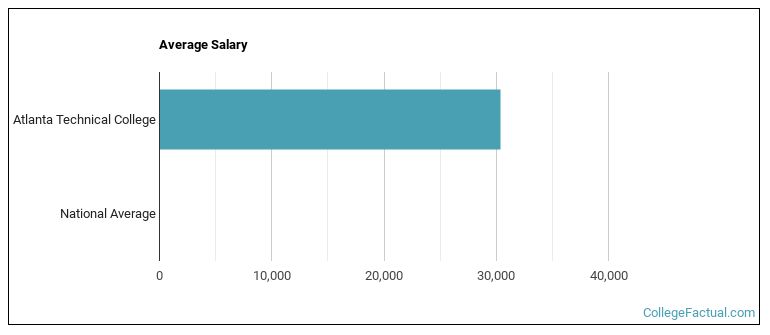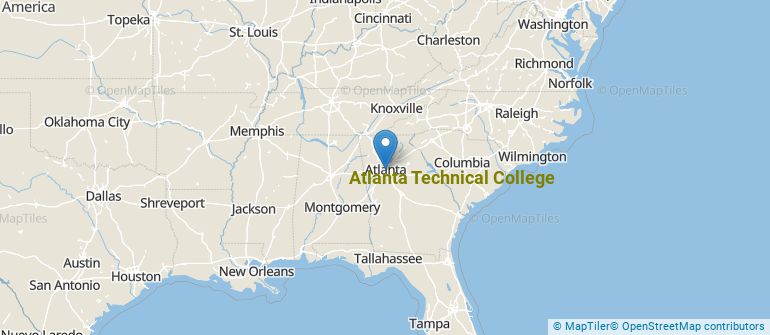 by our College Data Analytics Team
by our College Data Analytics Team
College Factual analyzes over 2,000 colleges and universities in its annual rankings and ranks them in a variety of ways, including most diverse, best overall quality, best for non-traditional students, and much more.
Atlanta Technical College was awarded 23 badges in the 2025 rankings. The highest ranked major at the school is allied health & medical assisting services.
Explore the best ranked schools for the programs you are most interested in.
According to College Factual's 2025 analysis, Atlanta Area Tech is ranked #1,446 out of 2,152 schools in the nation that were analyzed for overall quality. This is an improvement over the previous year, when Atlanta Area Tech held the #1,593 spot on the Best Overall Colleges list.
Atlanta Area Tech also holds the #37 spot on the Best Colleges in Georgia ranking.
Since Atlanta Technical College has an open admissions policy, being accepted to the school isn't that hard. However, a full basic things - such as a high school diploma or equivalent - may be required. Also, go over your application to make sure it is complete before you submit it.
The student to faculty ratio is often used to measure the number of teaching resources that a college or university offers its students. The national average for this metric is 15 to 1, but at Atlanta Area Tech it is much better at 12 to 1. That's good news for students who want to interact more on a personal level with their teachers.
Another measure that is often used to estimate how much access students will have to their professors is how many faculty members are full-time. The idea here is that part-time faculty tend to spend less time on campus, so they may not be as available to students as full-timers.
The full-time faculty percentage at Atlanta Technical College is 35%. This is lower than the national average of 47%.
The freshmen retention rate is a sign of how many full-time students like a college or university well enough to come back for their sophomore year. At Atlanta Technical College this rate is 55%, which is a bit lower than the national average of 68%.
During the 2017-2018 academic year, there were 3,030 undergraduates at Atlanta Area Tech with 818 being full-time and 2,212 being part-time.
It's not uncommon for college students to take out loans to pay for school. In fact, almost 66% of students nationwide depend at least partially on loans. At Atlanta Area Tech, approximately 31% of students took out student loans averaging $5,340 a year. That adds up to $21,360 over four years for those students.
Get more details about paying for Atlanta Technical College.

See which majors at Atlanta Technical College make the most money.
Get more details about the location of Atlanta Technical College.

Contact details for Atlanta Area Tech are given below.
| Contact Details | |
|---|---|
| Address: | 1560 Metropolitan Pkwy Sw, Atlanta, GA 30310-4446 |
| Phone: | 404-225-4400 |
| Website: | https://atlantatech.edu/ |
| Most Popular Majors | Bachelor’s Degrees | Average Salary of Graduates |
|---|---|---|
| Information Technology | 196 | NA |
| Liberal Arts General Studies | 188 | NA |
| Human Development & Family Studies | 140 | NA |
| Computer Software & Applications | 139 | NA |
| Vehicle Maintenance & Repair | 139 | NA |
| Electronics Maintenance & Repair | 123 | NA |
| Cosmetology | 105 | NA |
| Allied Health & Medical Assisting Services | 99 | NA |
| Heating, Air Conditioning, Ventilation & Refrigeration | 99 | NA |
| Allied Health Professions | 97 | NA |
Online learning is becoming popular at even the oldest colleges and universities in the United States. Not only are online classes great for returning adults with busy schedules, they are also frequented by a growing number of traditional students.
In 2022-2023, 2,376 students took at least one online class at Atlanta Technical College. This is a decrease from the 2,691 students who took online classes the previous year.
| Year | Took at Least One Online Class | Took All Classes Online |
|---|---|---|
| 2022-2023 | 2,376 | 1,447 |
| 2021-2022 | 2,691 | 1,758 |
| 2020-2021 | 2,516 | 2,011 |
| 2018-2019 | 2,111 | 702 |
Learn more about online learning at Atlanta Technical College.
Footnotes
*The racial-ethnic minorities count is calculated by taking the total number of students and subtracting white students, international students, and students whose race/ethnicity was unknown. This number is then divided by the total number of students at the school to obtain the racial-ethnic minorities percentage.
References
More about our data sources and methodologies.